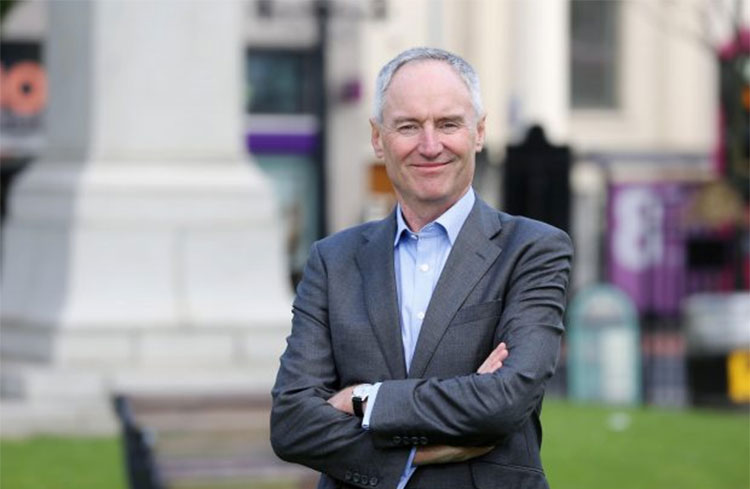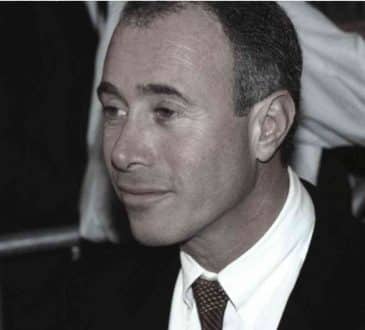Reimagining the Office beyond the Pandemic

“What’s the purpose of the office?”
That is a question I’ve been asking many people in recent years — not ever imagining that the future of offices would be the most hotly debated topic in 2020. Current circumstances have certainly thrown a massive spotlight on the world of office work, so much so that the mainstream press now regularly feature pieces on the “death of the office.” It might make for sensational headlines, but I don’t believe that the office is dead or dying — just that it’s not going back to normal.
The challenges imposed on us by the pandemic force us to consider options and scenarios that are unprecedented, complex and pose real dilemmas in the ways we live and work. We are all facing large-scale fear of the unknown, existential threats to business survival and even greater levels of uncertainty all at the same time globally.
The property industry is facing a crossroads as it come to terms with the realization that the old way of doing things, such as the traditional leasing model, is not going to cut it post Covid-19. The pandemic has not only changed the ballgame, but the entire stadium!
Six Dilemmas for Office Providers and Users
For many players who are investors or property companies on the supply side, the hope is that this will play out like any other market downturn. For occupiers, this pandemic has fanned the flames of change into a firestorm when it comes to figuring out how to attract and retain the best talent, how to gain competitive advantage and, sadly for many, how to survive.
Because of the mutual dependency between the supply and demand side of the property equation, we need to stand back and look at this situation holistically — since the dilemmas facing one side impact the other side in equal measure. Demand is fundamentally changing and this is going to impact how offices are supplied and operated.
Six dilemmas affect the way we work in offices today:
- A fundamental difference exists in how real estate providers view office buildings as assets, while the enterprises who occupy the space perceive it as a resource to facilitate their work. This has brought about a leasing system based on medieval constructs — highly adversarial in nature and full of inefficiencies.
- Enterprises large and small are changing radically and rapidly. So are the ways that people work. Yet the nature of the workplace and how that space is organized hasn’t fully responded to these significant changes.
- The way we have done things until now fails to recognize that the way workspace is managed and operated is the key ingredient for enabling productivity. It has not been fully understood that it’s not just about clever design, great furniture systems or how the space is managed and curated to deliver great experiences.
- There is an over-emphasis on the physical workplace — viewing it purely as a fixed destination where work is carried out. Alternative working practices can produce meaningful outcomes and measurable impact irrespective of the physical space where people are working.
- When we talk about the workplace, Human Resources naturally focuses on the people aspect, while for Corporate Real Estate and Financial Management the focus is on property, which leads to division within organizations.
- Occupiers’ internal support systems, such as Human Resources, Information Technology, CRE/FM/Property and Operations, typically work in silos. It’s natural and not surprising then, that they all have divergent points of view on how an organization uses and operates its workplaces.
Key Ingredients for a Shift from Fixed to Fluid
We need to figure out a new model for how we use offices — one based on a move from the rigid “one-person-one desk” mindset and the large consolidated central business district (CBD) office block to a more fluid distributed arrangement. In this way, an enterprise can retain a flagship CBD facility for collaboration and socializing purposes, along with a range of flexible and on-demand solutions that would all be fully serviced as we embrace the concept of “space as a service.”
The following are key ingredients for creating this shift from fixed to fluid:
Adopt a customer service focus. Real estate owners and investors need to create better relationships with their occupier clients and look to broaden their services — helping educate these occupiers in how to make the best use of their property. Maintaining the traditional adversarial landlord and tenant relationship won’t cut it anymore!
Expand the range of possibilities. All parties, including the businesses, the providers and the managers, need to recognize that the provision of workspaces has shifted irretrievably from fixed to fluid. This makes for new dimensions in terms of demand and this should be seized as an opportunity.
Shift from building-centric to people-centric. The enterprise that recognizes the link between an engaged workforce and a well-run productive workspace — now underpinned by distributed working — gains clear competitive advantage with new opportunities opening.
Move beyond either/or options. Spaces and places can be used in smarter, more sustainable ways for all the stakeholders — providers, users and intermediaries. The key is to adopt a fresh approach based on improved awareness and stronger relationships between all parties.
Break down silos. Internal support groups (HR, IT, CRE/FM and Procurement) need to be reviewed and combined to enable work and productivity. These functions should consolidate to empower a fresh focus and support multi-dimensional or omnichannel working.
Join the dots. Real Estate providers and enterprises who consume offices could benefit from a joined-up approach to people and place. Workplaces need to deliver not only entrepreneurial and financial value, but social value as well. Focusing on user experience and well-being, as well as sustainability matters, will yield benefits for all. Transforming buildings to reduce emissions and limiting the use of harmful materials have now become key considerations for everyone. By acknowledging that the global community has become increasingly discerning about environmental and ethical practices of their employers and associated landlords, new opportunities emerge. It’s possible to create smart value solutions that are greater than the sum of the traditional single dimension approach.
We need to look beyond the pandemic to create a vision for 21st-century workplaces. They must inspire employee engagement, foster creativity and increase productivity while also improving an enterprise’s capacity to compete and create value in all its guises. By working together, both landlords and tenants of commercial real estate can create effective and engaging workplaces that play their part in leaving a more sustainable built legacy for future generations.
Written by Chris Kane.
Add CEOWORLD magazine to your Google News feed.
Follow CEOWORLD magazine headlines on: Google News, LinkedIn, Twitter, and Facebook.
This report/news/ranking/statistics has been prepared only for general guidance on matters of interest and does not constitute professional advice. You should not act upon the information contained in this publication without obtaining specific professional advice. No representation or warranty (express or implied) is given as to the accuracy or completeness of the information contained in this publication, and, to the extent permitted by law, CEOWORLD magazine does not accept or assume any liability, responsibility or duty of care for any consequences of you or anyone else acting, or refraining to act, in reliance on the information contained in this publication or for any decision based on it.
Copyright 2024 The CEOWORLD magazine. All rights reserved. This material (and any extract from it) must not be copied, redistributed or placed on any website, without CEOWORLD magazine' prior written consent. For media queries, please contact: info@ceoworld.biz
SUBSCRIBE NEWSLETTER









